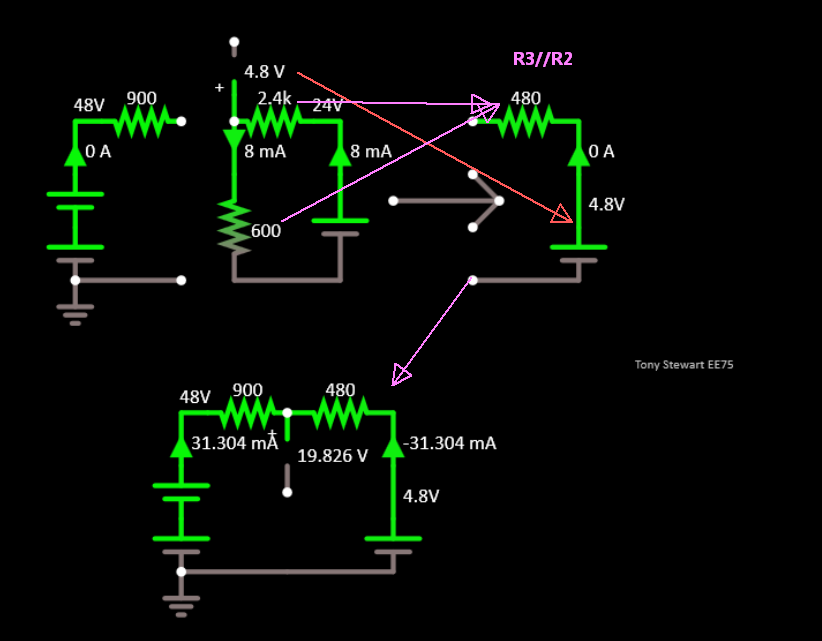I've been going through the DC Theory textbook by NJATC to learn basic electronics so I can better enjoy my guitar tinkering. But I also want to be able to repair or maybe even build effect pedals and amps. So I'm trying to understand everything that comes my way.
This book gets into superposition theorem, which is all good as far as finding currents. But then it goes into finding total voltage for a two loop circuit and that point it either skips an important step or introduces an incorrect value, after which it is simply useless because there is no way I can replicate their results without knowing how to derive that value (which they do not explain).
My questions are:
1. "How do I derive the value at I1?"
2. "What is the correct value at I1 so I can check my work?"
Here is the circuit:
Here is the page (figure 22-6) where they introduce a seemingly arbitrary value for the current source I1 of 0.4A where the 24v battery would normally be. That value is used repeatedly to derive the total circuit voltage on the following pages. (They actually use the inserted value of 0.4 (p263) to derive the values that add up to 0.4 (p265). (Lovely example of circular reasoning and bad editing.)
The values I derived for the combined circuit are as follows, with a positive number denoting flow from the direction of the 48v battery (right hand) and a negative number denoting flow from the direction of the 24 volt battery (left hand). R3 has both flows travelling together in the same direction.
Total Combined Values : E, I, R
- R1: 28.17 V, 0.031 A, 900 ohms
- R2: -4.17 V, -0.002 A, 2400 ohms
- R3: 19.83 V, 0.033 A, 600 ohms
Here are the rest of the pages, to show what the book is trying to teach:







